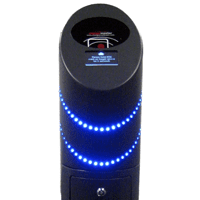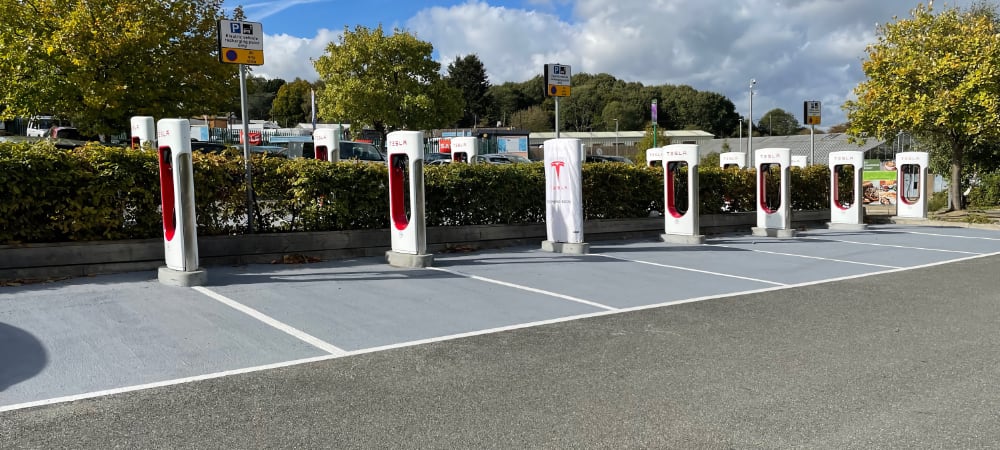Our industry is growing like crazy with EV sales experiencing over 100% sales growth yet the number of EV sold is still a tiny share of global car sales.
We speak to a great many customers who are looking at or have just purchased an EV. There are a great deal of phrases and terminology that are confusing and thus hard to understand what they mean. All industries have their own language and LTAs or acronyms.
Plus, there are a lot of technical phrases used to sell EVs and while the initial buyers tended to be on the geeky end of the spectrum who may relish the engineering speak, but as sales now include more regular consumers who may now have such a sound grasp of physics and maths.
This guide help to explain the key points that we get asked.
What is a kW and what is a kW hour or kWh?
Let’s start with a Watt. A watt (W) is a unit of power. Think of power as “the ability to do work.” A watt-hour is a measure of energy, which means the amount of work done over a certain period of time.
A kilowatt is simply a thousand watts, and a kilowatt-hour is a record of an average output of a thousand watts over an hour.
Another way to think about power and energy is a marathon runner. Power is like the ability to run at a certain pace, and the distance the runner covers is the amount of energy they used.
kW and kWh on your electricity bill
As your home uses electricity during the day, a meter spins (or digitally counts up) to record the amount of power you use at all times. This measurement adds up to a certain number of kWh of energy consumption at the end of the month.
At the end of each billing cycle, the company “reads” your meter and records a total for energy usage.
Say you use 1,000 kWh per month, and your electric rate is £.25/kWh – your bill would be £250.00, plus any additional connection and service fees.
EV Power and Battery size
An EV battery capacity or pack is quoted in kWh (kilowatt hours). A Tesla Model S 100, no longer sold, for example has a 100 kWh battery pack. That’s a large battery by EV standards. Most EVs are in the 40-65 kWh range.
Filling the battery. Charging speeds are quoted in kW (kilowatts). Home chargers are usually rated at 7 kW. If for example you 70 kWh EV is empty it would in theory take 10 hours to charge at home with a 7 kW charger. (70 kWh pack with a 7 kW charger takes 70/7 or 10 hours.)
Why 7Kw you ask? Well here in the UK and Europe we have a 240 Volt supply and the industry likes to charge at 32 Amps. A little knowledge of O level physics knows that power is Volts * Amps and we have 240 * 32 = 7,680 or 7 k Watts.
However the output of an EV’s electric motor is also expressed in kW – although sometimes this is quoted in PS, HP or BHP. Being aware of the power output of an EV is important. The output of an electric motor of a plug-in hybrid vehicle (PHEV) is usually relatively low, whereas the power output of the electric motor of a pure EV is usually much higher, which is the reason why BEVs (battery electric vehicles) have strong performance, but PHEVs typically have poor performance when driving on electric power.
We now know that the battery capacity of an EV is stated in kWh, which is a new concept to many motorists. To make things even more confusing, some vendors quote battery size in terms of the ‘actual’ size of an EV’s battery, and sometimes battery sizes are quoted for the ‘usable’ size of an EV’s battery – both of which are different. Some vendors may have a 65 kWh pack but only let you access 58 kWh to keep some energy in the battery even when it is rated as empty. Consumers can find it hard to know which battery size is being quoted for a particular EV, making like-for-like comparisons difficult.
Recap:
Power is k Watts. While Energy is k Watts hours. The battery stores Energy and is measured in kWh. Think of a oven. This uses, say a 1,000 Watts to cook your cake. If this takes an hour then the cake cooking has taken 1 kWh. – One kW for one hour.
EV Range
How far will my EV go on a charge? Great question. A little like what’s a petrol cars MPG. Note we tend to call all Petrol or Diesel powers cars ICE. Or Internal Combustion Engine. Most ICE manufactures claim an MPG that everyone knows is never going to be achieved in the real world. EV range is similar. All EV now quote a range under what is called the Worldwide Harmonised Light Vehicle Test Procedure (WLTP) figure, this is still not a realistic expectation of what can expected in real-world driving due to variables such as driving style, weather, load, topography, etc. It’s often not clear for car buyers if the electric driving range figures displayed in response to online searches are for WLTP or estimated real-world driving ranges. Buyers find this most annoying as the impact can be huge. We know of customers who purchased an EV to drive to and from work assuming that the car with a range of 246 miles should cope with the 204 mile journey only to find that come winter the real range was more like 200 miles. This creates range anxiety. Hence the next topic – Charging times.
Charging times
Chargers come in aa range of flavours with confusing names. For example what’s the difference between slow, fast, rapid and ultra-rapid charging? Most people don’t know, but more worryingly, there is much inconsistency within the industry over the use of these terms.
Slow charging should refer to charging using a domestic 240 volt 3-pin plug, or up to 3 kW.
Fast charging should refer to 7 kW (a home wall box 240 Volts at 32 Amp) to 22 kW (typically found at a public charging site offering 240 Volt at 32 Amp and 3 phase). Not all EV can take a three phase supply. In fact most don’t, so are limited to 7 kW charging. These chargers require the EV driver to bring their own cable to connect to the public Type 2 charger post
Rapid charging refers to public charging that is between 50 kW to 100 kW. All rapid units have tethered cables and come in a variety of charge types.
Rapid devices supply high power direct or alternating current – DC or AC – to charge an electric car as fast as possible.
Depending on the model, you can charge an electric car to 80% in as little as 10-15 minutes, though an average new EV would take around an hour on a standard 50 kW rapid charge point.
Power from a unit represents the maximum charging speed available, though the car will reduce charging speed as the battery gets closer to full charge. As such, times are quoted for a charge to 80%, after which EV charging speeds tail off significantly. This maximises charging efficiency and helps protect the battery.
All rapid devices have charging cables tethered to the unit, and rapid charging can only be used on vehicles with rapid-charging capability. Given the easily recognisable connector profiles – see images below – the specification for your model is easy to check from the vehicle manual or inspecting the on-board socket.

Most new EVs use the CCS connection. Especially true for European models – VW, Audi, Porsche, BMW. Tesla Model 3 and Y also use CCS. The CHAdeMO was an early connection technology developed in Japan and used on the Nissan LEAF V1 and the Mitsubishi Outlander PHEV.
Ultra-rapid charging refers to charging at rates above 100 kW. The problem is that the terminology is applied differently by different people. Some regard Ulta rapid as over 150kW. We like the 100 kW or more clasification. These are typically either 100 kW, 150 kW, or 350 kW – though other maximum EV charging speeds between these figures are possible. These are the next-generation of rapid charge point, able to keep recharging times down despite battery capacities increasing in newer EVs.
Tesla Superchargers
Tesla’s Supercharger network also provides rapid DC charging to drivers of its cars, but use either a Tesla Type 2 connector or a Tesla CCS connector – depending on model. These can charge at up to 150 kW.
While all Tesla models are designed for use with Supercharger units, many Tesla owners use adaptors which enable them to use general public rapid points, with CCS and CHAdeMO adaptors available. The roll-out of CCS charging on the Model 3 and subsequent upgrading of older models allows drivers to access a greater proportion of the UK’s rapid charging infrastructure.
Model S and Model X drivers are able to use the Tesla Type 2 connector fitted to all Supercharger units. Tesla Model 3 drivers must use the Tesla CCS connector, which is being phased in across all Supercharger units.
The car is the limit
One key thing to remember is that the charger is rated at the maximum output that ir can deliver to an EV. However the car may not be able to accept that amount of power and will only change at the rate determined by the cars on board charger. As mentioned earlier the car’s charging rate will slow as the battery fills with charge. This is partly why manufactures like to quote the 10-80% charge time as this is usually when the maximum rates can be achieved. The charge level also depends on the battery state of charge and temperature.
Look out for maximum charging rate. THIS IS IMPORTANT because if you plug your EV into a 350 kW charger but your EV can only accept a 100 kW, then your charging will be a great deal slower than an EV that can charge at 350 kW.
Drop-off in charging speed
Many EV drivers believe that if they charge at a 100 kW chargepoint, the car will charge at 100 kW for the duration of the charge. In reality, nothing could be further from the truth. If you’re lucky, a charge could start at 100 kW, but it could be less, and it will drop from this rate, typically reducing down in ‘steps’. This is because an EV is likely to charge at a fast rate when its battery is almost empty, but when the battery charge increases, the charging speed will drop significantly. It’s for this reason that EV manufacturers will typically quote rapid charge times from 10% to 80% rather than to 100% – although again there is much inconsistency in the industry about the exact figures that are quoted – some manufacturers quote the time taken for an EV to charge from 0% to 80%. This is also why it takes a long time to charge from 80% to 100% at a public rapid charger – so it’s best to stop charging at that point, move along and let other EV drivers use the charger.
Public charging, connectors & cables
Motorists who have previously never used public charging are often confused and anxious about charging an EV. There are lots of technical terms used when referring to charging, connectors and cables – such as CHAdeMO, CCS, Type 1, Type 2, etc. The good news is that the vast majority of new EVs use just one type of charging connector for public rapid charging – CCS (combined charging system) – and charging at most rapid chargers is as simple as connecting the charger’s cable with the CCS connector to the car’s socket and making a contactless payment. With Fast Charging most public charge points offer a Type 2 Socket. You then connect your charge cable to the post and to the car.


Efficiency
A ‘miles per gallon’ figure has been quoted for ICE cars for many years, so buyers can compare how efficient one car is against another. A ‘miles per gallon’ figure isn’t applicable to an EV, but, with rising energy prices, it’s important to know how efficient an EV is compared to rivals. Efficiency figures do exist for EVs, but they’re often not easy to find, and the figures quoted are often inconsistent. For example, some EVs have a ‘miles/kWh’ figure quoted, whereas others have figures for ‘kWh/100km’, ‘Wh/mi’ or ‘Wh/km’. Miles/kWh is the most easily comparable with miles per gallon, so this should be used for consistency.
Electrified
Manufacturers are increasingly using the term ‘electrified’ for their cars, but what does this mean? Does it mean fully electric? Or plug-in hybrid? Or hybrid? Or mild-hybrid? Well, car manufacturers seem to use the term to cover all of the above technologies, which makes it very confusing – and misleading – for car buyers.
For example Nissan, who were one of the EV pioneers with the LEAF now offer the Qashqai as a Mild Hybrid and e-Power. 
The E-Power version is 100% electric power in that it has an electric motor to drive the car. But no plug. The car also has a ICE power unit, a small petrol engine to charge the batteries that drive the car. Confusing – you bet.

